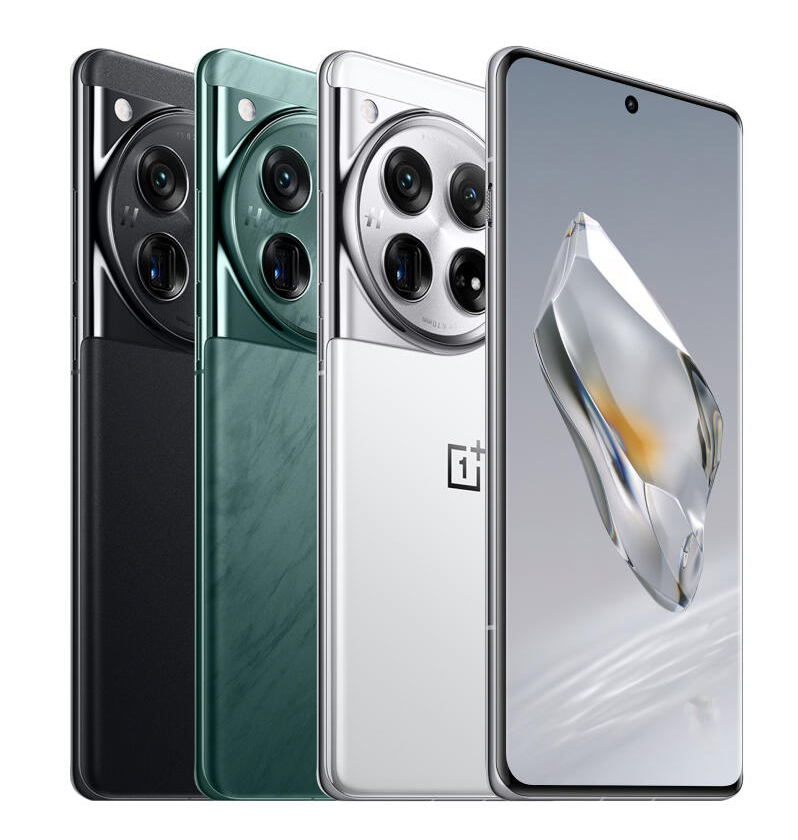All of my opinions are italicized and sources are in blue.
As reported by Ars Technica,
To comply with European Union regulations, Apple has introduced sweeping changes that make iOS and Apple’s other operating systems more open. The changes are far-reaching and touch many parts of the user experience on the iPhone. They’ll be coming as part of iOS 17.4 in March.
Apple will introduce “new APIs and tools that enable developers to offer their iOS apps for download from alternative app marketplaces,” as well as a new framework and set of APIs that allow third parties to set up and manage those stores—essentially new forms of apps that can download other apps without going through the App Store. That includes the ability to manage updates for other developers’ apps that are distributed through the marketplaces.
The company will also offer APIs and a new framework for third-party web browsers to use browser engines other than Safari’s WebKit. Until now, browsers like Chrome and Firefox were still built on top of Apple’s tech. They essentially were mobile Safari, but with bookmarks and other features tied to alternative desktop browsers.
The changes also extend to NFC technology and contactless payments. Previously, only Apple Pay could fully access those features on the iPhone. Now, Apple will introduce new APIs that will let developers of banking and wallet apps gain more comparable access.
Developers will have new options for using alternative payment service providers within apps and for directing users to complete payments on external websites via link-outs. They’ll be able to use their apps to tell users about promotions and deals that are offered outside of those apps. (Apple warns that it will not be able to provide refunds or support for customers who purchased something outside its own payment system.)
Apple says it will give users in the European Union the ability to pick default App Stores or default contactless payment apps, just like they already can for email clients or web browsers. EU users will be prompted to pick a default browser when they first open Safari in iOS 17.4 or later, too.
Developers can “submit additional requests for interoperability with iPhone and iOS hardware and software features” via a new form.
All of the above changes impact only the EU; Apple won’t bring them to the United States or other regions at this time. There is one notable change that extends beyond Europe, though: Apple says that “developers can now submit a single app with the capability to stream all of the games offered in their catalog.” That opens the door for services like Microsoft’s Xbox Game Pass or Nvidia’s GeForce Now.
Apple notes that “each experience made available in an app on the App Store will be required to adhere to all App Store Review Guidelines,” which could still pose some barriers for game streamers.
Apple announced this shift to comply with the Digital Markets Act (DMA), wide-ranging antitrust legislation that among other things seeks to make software distribution platforms fairer for developers. Apple is appealing the legislation, but it still has to comply by the current March 6, 2024, deadline.
Apple’s public communications related to the changes are filled with statements telling users that the company’s platforms will become less secure and less safe as a result, echoing the public reasoning behind the company’s past resistance to the regulation.
“The changes we’re announcing today comply with the Digital Markets Act’s requirements in the European Union, while helping to protect EU users from the unavoidable increased privacy and security threats this regulation brings. Our priority remains creating the best, most secure possible experience for our users in the EU and around the world,” Apple Fellow Phil Schiller said in a statement.
The company’s newsroom post announcing the shift notes that it will release resources to “help EU users navigate the complexities the DMA’s changes bring—including a less intuitive user experience—and best practices for approaching new risks associated with downloading apps and processing payments outside of the App Store.”
While Apple will follow the letter of the law regarding the DMA, it says it will also introduce what it calls safeguards and protections to reduce risks to users “within the DMA’s constraints.”
All iOS apps will have to be notarized, regardless of whether they are distributed on Apple’s own App Store or an alternative marketplace. That means a “baseline review” by both human beings and automated systems “focused on platform integrity and protecting users.”
Marketplace developers will have to gain authorization to make sure they “commit to ongoing requirements that help protect users and developers.”
Apple says that some iOS apps may sometimes be prevented from launching if they have been shown to contain malware. It will also provide users with “app installation sheets” built on information gathered during the notarization step.
Additionally, the controversial App Tracking Transparency pop-up will still be required for apps distributed in alternative marketplaces.
To participate in any of the newly announced capabilities within the EU, developers must agree to new business terms set out by Apple. If they don’t want to agree to the new terms, they can continue under the old terms and follow the same rules they have needed to before.
The new terms include a reduced commission of either 10 percent or 17 percent on transactions on apps sold within the Apple App Store and a requirement that developers pay an additional 3 percent fee to use the App Store’s payment processing.
Most importantly, Apple will introduce the “Core Technology Fee,” wherein “iOS apps distributed from the App Store and/or an alternative app marketplace will pay €0.50 for each first annual install per year over a 1 million threshold.”
Apple claims it introduced these new fees to accurately reflect the value the company offers to developers in terms of developing the hardware install base, providing and maintaining the tech stack on which iPhone apps are built, and distribution and discovery possibilities on the App Store.
As reported by Ars Technica,
Apple’s Vision Pro went up for preorder on January 19th. As expected, shipment dates for preorders quickly backed up to March as initial supply was accounted for. Regardless of whether you’re in for the start or taking a wait-and-see approach with Apple’s ultra-pricey new device, though, we have access to a little more information about the device than we did before thanks to updates to the Apple Store website.
The product page for Vision Pro reveals configurations and pricing, and a new specs page clarifies answers to some questions we’ve had for a while now.
As previously rumored, the Vision Pro has a variant of the M2 chip with an 8-core CPU (4 performance cores and 4 efficiency), a 10-core GPU, and a 16-core NPU. It has 16GB of unified memory.
There’s also the new R1 chip, which Apple claims achieves “12‑millisecond photon‑to‑photon latency” and 256GB/s memory bandwidth.
As for the display, we didn’t learn too much new here. As Apple has stated before, the two displays push 23 million pixels combined. They support refresh rates of 90 Hz, 96 Hz, and 100 Hz, and support playback of 24 fps and 30 fps video. Apple claims 92 percent DCI-P3.
The specs page also reveals that Vision Pro supports AirPlay at up to 1080p on iPhones, Macs, Apple TVs, and AirPlay-capable smart TVs.
Storage comes in three configurations. The base 256GB model costs $3,499. Bumping up to 512GB adds $200, and going to 1TB adds another $200.
The device’s camera supports both spatial photo and video capture, and Apple lists the specs as an 18 mm, ƒ/2.00 aperture at 6.5 stereo megapixels.
Additionally, there are six world-facing tracking cameras, four eye-tracking cameras, a TrueDepth sensor, a lidar scanner, four inertial measurement units, a flicker sensor, and an ambient light sensor. The headset authenticates the user by looking at their iris.
On the audio front, we’re looking at a six-mic array for audio capture. Apple isn’t super specific on the specs page about the speakers, noting only that the device offers “spatial audio with dynamic head tracking” like AirPods Pro and “personalized Spatial Audio and audio ray tracing.” Vision Pro also supports low-latency, lossless audio with the second generation of AirPods Pro.
Connectivity options include Wi-Fi 6 and Bluetooth 5.3.
Apple promises two hours of battery life for “general use” and says video watching can be up to 2.5 hours. The specs page also clarifies that Vision Pro can be used while charging the battery, which is something Apple had previously stated but then confusingly removed from its online documentation. This page seems to settle that.
The headset weighs between 21.2 and 22.9 ounces (600–650 g) depending on the light seal and headband used. That doesn’t include the battery pack, which weighs 353 g. That means Apple made the headset substantially lighter by pushing the battery to a separate unit.
Despite costing $3500, only coming with 256GB, and charging $200 per storage upgrade, Apple somehow managed to sell up to 180,000 units, according to Apple analyst Ming-Chi Kuo’s blog.

As reported by Ars Technica,
OnePlus previously announced the OnePlus 12 flagship smartphone in December, but now it’s getting a US release and pricing. The phone ships on February 6 in the US and Canada with an $800 price tag. OnePlus is also bringing the rather interesting OnePlus 12R to the US, a 6.8-inch device running last year’s flagship Qualcomm chip, the Snapdragon 8 Gen 2, for $500.
$800 is a pretty good price for a flagship phone. Samsung’s 6.8-inch flagship is the $1,300 Galaxy S24. The Pixel 8 Pro is $1,000, so OnePlus is undercutting the competition quite a bit. As we said, this device was already announced in December, but the highlights are an impressive 5400 mAh battery and super fast charging. The phone has 80 W proprietary wired charging in the US and 100 W internationally, while wireless charging is 50 W. OnePlus says 80 W is still fast enough to go from 1 percent to 100 percent in 30 minutes. OnePlus only promises an IP65 dust and water resistance rating, so it’s not submergible, which is worse than most flagships. Other than that, it’s a lot of normal flagship things: a 6.82-inch, 3168×1440 120 Hz OLED that—unlike Samsung and Google—is still curved, a Snapdragon 8 Gen 3, and too many cameras.
The 24GB of RAM/1TB of storage spec apparently isn’t coming to the US—the $800 model is 12GB of RAM and 256GB of storage, and there’s a single higher tier of 16GB of RAM and 512GB of storage for $900. The white color is also not arriving here. You get black for $800, with the $900 model arriving in black or green.
As for the OnePlus 12R, these “R” models don’t usually come to the US, but this one is headed here on February 13. On the surface, you’re not missing a lot with the lower price. There’s still a 6.78-inch 120Hz OLED display, and while the resolution is 2780×1264, that’s still totally fine 450 ppi. There’s a plenty-fast Snapdragon 8 Gen 2, what must be an industry-leading 5500 mAh battery, an in-screen fingerprint reader, NFC, and 80 W charging. Compare this to a $500 Pixel 7a, which still has a “flagship” class SoC, the Google Tensor G2, but it only has a 6.1-inch, 90 Hz display and a barely there 4385 mAh battery. OnePlus is jumping back into the value phone game.
Now we’re starting to find downgrades: The phone has 8GB of RAM and 128GB of UFS 4.0 storage. The cameras are downgraded, too. The main sensor is a 50 MP Sony IMX890, which is usually a secondary camera on other phones. Then the other two rear cameras sound like junk: an 8 MP wide-angle camera with no autofocus and a 2 MP “macro” lens. The front camera is 16 MP and also doesn’t have autofocus. The phone has an IP64 dust and water resistance rating, which means it’s only “splash proof”—I don’t even think you can run it under a sink faucet. (Sometimes, I wash my IP68 phone in the sink like it’s a dirty dish!) There’s also no wireless charging.
As reported by Tom’s Hardware,
Even with a case filed against the company for blocking third-party inks using its Dynamic Security updates a few days ago, HP is adamant about doing what it can to maintain a monopoly in its refillable ink cartridges for its printers. While this isn’t a new practice from HP, it continues to push forward with consumer-unfriendly tactics, from bricking printers to the latest: claiming that third-party ink cartridges can be used to infect users’ PCs with viruses.
In an interview with CNBC, HP Inc. CEO Enrique Lores said, “We have seen that you can embed viruses in the cartridges. Through the cartridge, the virus can go to the printer, and then from the printer, go to the network.”
HP’s evidence of this claim uses research funded by the company in 2022. The study emphasizes that HP’s cartridges typically use a chip to communicate with the printer and hence they are secured. The research claims that the cartridges sold by third parties also use reprogrammable chips, and hence could contain malicious software.
Many security experts have claimed otherwise, and this makes sense, since HP already claimed in its study that its chips are secure, implying that there is a mechanism that verifies the chip’s authenticity, just like any other hardware that requires authentication with other devices. But of course, making consumers fear the possibility of infection from third-party cartridges, whether justified or not, will also almost certainly dissuade some of HP’s customers from buying ink that doesn’t come directly from HP.
From a business perspective, these moves shouldn’t be surprising. The company would prefer to have a subscription model for its printer inks, as Lores states in the same interview with CNBC. The company’s Dynamic Security, which made its debut in 2016, has been part of many class action lawsuits and anti-trust cases in and out of the United States, and in Europe, the company settled for $1.3 million in a case revolving around the feature. Despite that, many strongly believe HP is continuing work to ensure customers cannot use third-party ink by any means necessary.
It should be noted that this reasoning stems from the question put forward by the CNBC reporter, stating that many users are angry that they were not made aware when using a new firmware that some of their printer’s functions would be disabled if they use third-party inks. Before this, the company CEO said that it was doing so to protect its IP. The company also said that every time a customer buys its printers, it’s an investment for the company.
Issues with printer inks have been a long-standing issue internationally. But HP seems to making several attempts and goes out of its way to ensure its customers cannot use third-party inks on printers they have purchased. Luckily consumers have many options out there, some even providing ink tanks. For those who feel they are being exploited by any manufacturer, one can simply shift to another brand, though it comes with a certain monetary loss. Irrespective of one’s ability to switch over, one’s bad experience with a company usually spills over to another range of products.
Knowing that there is no true monopoly in the printing and computing business, one would concur that HP is risking its brand’s reputation and credibility while relentlessly pursuing such lengths to restrict its existing customer’s choices.

As reported by Ars Technica,
Amazon users are at this point used to search results filled with products that are fraudulent, scams, or quite literally garbage. These days, though, they also may have to pick through obviously shady products, with names like “I’m sorry but I cannot fulfill this request it goes against OpenAI use policy.”
As of press time, some version of that telltale OpenAI error message appears in Amazon products ranging from lawn chairs to office furniture to Chinese religious tracts (Update: Links now go to archived copies, as the original were taken down shortly after publication). A few similarly named products that were available as of this morning have been taken down as word of the listings spreads across social media (one such example is archived here).
Other Amazon product names don’t mention OpenAI specifically but feature apparent AI-related error messages, such as “Sorry but I can’t generate a response to that request” or “Sorry but I can’t provide the information you’re looking for,” (available in a variety of colors). Sometimes, the product names even highlight the specific reason why the apparent AI-generation request failed, noting that OpenAI can’t provide content that “requires using trademarked brand names” or “promotes a specific religious institution” or, in one case, “encourage unethical behavior.”The descriptions for these oddly named products are also riddled with obvious AI error messages like, “Apologies, but I am unable to provide the information you’re seeking.” One product description for a set of tables and chairs (which has since been taken down) hilariously noted: “Our [product] can be used for a variety of tasks, such [task 1], [task 2], and [task 3]].” Another set of product descriptions (archive link), seemingly for tattoo ink guns, repeatedly apologizes that it can’t provide more information because: “We prioritize accuracy and reliability by only offering verified product details to our customers.”

